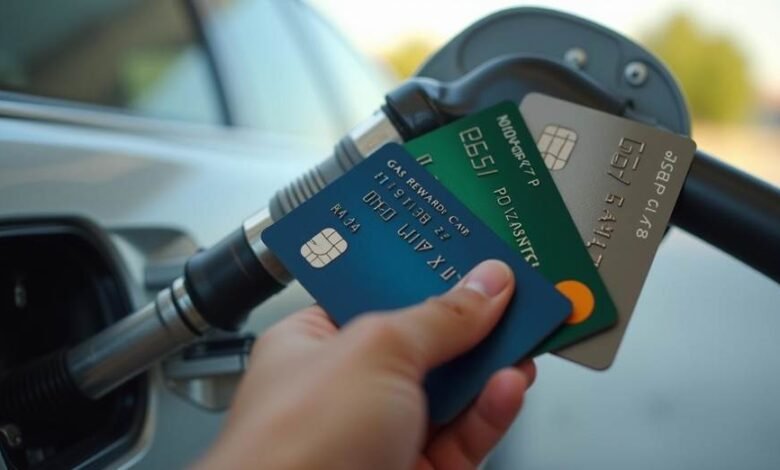Are Gas Cards Easy for Fleet Drivers to Use?

The Best Gas Cards of 2025
Gas cards deliver substantial fuel savings through cashback rewards, points programs, and exclusive discounts at participating stations across extensive networks. The average American household spends $2,148 annually on gasoline, making a gas card with 3-5% rewards worth $64-107 in yearly savings. Speedway fuel cards combine fuel rewards with in-store purchase benefits, creating multiple opportunities for earning points on everyday transactions. These specialized payment tools provide better expense tracking than standard credit cards while offering competitive approval rates for various credit score ranges.
Types of Gas Cards and Their Rewards Structure
Personal gas credit cards from major issuers like Chase, Citi, and Bank of America typically offer 2-5% cashback on fuel purchases at any station, with some providing rotating quarterly categories that boost earnings to 5%. Business gas cards focus on fleet management services, detailed billing statements, and volume-based discounts that help companies control fuel expenses while building business credit. Prepaid gas cards and gift cards serve customers who want to avoid credit checks or manage spending limits, though these products rarely include rewards programs or loyalty benefits.
Retail-branded cards from Chevron, Shell, and ExxonMobil provide enhanced savings at their specific station networks, often combining instant per-gallon discounts with points accumulation. These cards typically offer 5-10 cents off per gallon for members, plus additional cashback on convenience store purchases inside their locations. The tradeoff involves limited acceptance outside the brand’s network, though many co-branded versions function as regular Visa or Mastercard products for broader use.
Application Process and Credit Score Requirements
Most gas card applications require a minimum credit score of 640-670 for approval, though secured options exist for people rebuilding credit. The application process takes 5-10 minutes online through the issuer’s secure portal, requiring personal information, income details, and employment verification. Business cards need additional documentation including EIN, company revenue, and years in operation, with decisions typically delivered within 7-10 business days.
Premium gas cards with higher rewards rates and sign-up offers generally require excellent credit scores above 720. These cards often waive the first year’s fee while providing 0% APR on balance transfers for 12-18 months, making them attractive for debt consolidation alongside fuel savings. Customer service teams can pre-qualify applicants without hard credit pulls, helping people determine their approval odds before formal submission.
Maximizing Fuel Savings and Points Accumulation
Strategic card use involves stacking manufacturer rewards with station loyalty programs and mobile app offers for compound savings. Many stations offer additional discounts through their proprietary apps, allowing customers to save 5-15 cents per gallon on top of credit card cashback. Comparing fleet fuel cards demonstrates how combining multiple discount sources at participating locations can reduce fuel expenses by 15-20% for regular commuters.
Payment timing affects rewards optimization since most cards require full balance payment to avoid interest charges that negate cashback benefits. Setting up automatic payments ensures on-time transactions while maintaining the grace period on purchases. Some issuers offer bonus points for reaching spending thresholds or maintaining account longevity, with elite status unlocking enhanced fuel discounts at partner networks.
Business Gas Cards and Fleet Management Benefits
Commercial fuel cards provide detailed expense tracking through online portals and mobile apps, categorizing transactions by driver, vehicle, and location for simplified accounting. These tools generate customizable reports showing fuel efficiency trends, maintenance alerts, and potential fraud indicators through unusual purchase patterns. Fleet managers can set individual spending limits, restrict purchases to fuel-only, and receive real-time notifications for every transaction.
Volume discounts become substantial for businesses with multiple vehicles, often reaching 8-12 cents per gallon savings at nationwide networks. Additional services include roadside assistance, maintenance discounts, and integration with expense management software. Many providers offer dedicated account representatives who analyze usage patterns and recommend optimization strategies based on route data and station pricing in specific regions including California and other high-cost states.
Security Features and Fraud Protection
Modern gas cards incorporate EMV chip technology, tokenization, and biometric authentication through mobile apps to prevent unauthorized use. Real-time fraud monitoring systems flag suspicious transactions based on location, amount, and frequency patterns, immediately notifying cardholders through text or app alerts. Zero liability policies protect customers from fraudulent charges when reported promptly, with provisional credits issued during investigation periods.
Digital wallet integration adds security layers while maintaining convenience at pump payments. Cards stored in Apple Pay, Google Pay, or Samsung Pay use device-specific tokens rather than actual card numbers, reducing skimming risks at compromised terminals. Two-factor authentication for online account access prevents unauthorized changes to payment methods or shipping addresses for gift card orders.
Network Acceptance and Station Coverage
Major gas card networks include over 95% of U.S. stations, though specific brand cards may limit rewards to particular chains. Visa and Mastercard-backed gas cards work globally, providing fuel purchase capability during international travel with competitive foreign transaction fees. Mobile apps help locate participating stations with current prices, amenities, and available discounts along planned routes.
Urban areas typically offer dense station coverage with multiple brand options, while rural regions may have limited choices affecting card selection strategies. Some cards provide equal rewards across all stations, while others tier benefits based on brand partnerships. Understanding local station distribution helps optimize card choice for maximum savings based on individual driving patterns and geographic constraints.
Comparing Gas Cards to Traditional Credit Card Options
General rewards credit cards sometimes outperform dedicated gas cards through flexible point systems and broader bonus categories. Premium travel cards earning 3x points on all travel and dining purchases can deliver higher value when points transfer to airline or hotel partners. However, gas-specific cards typically provide simpler redemption processes and immediate statement credits without complex point valuations.
Annual fees factor significantly in value calculations since many gas cards charge $0-95 yearly while premium rewards cards often exceed $400. Breakeven analysis based on individual fuel spending determines whether specialized gas cards or general cashback products deliver better returns. Secondary benefits like purchase protection, extended warranties, and travel insurance may justify higher fees for consumers valuing comprehensive coverage beyond fuel savings.







